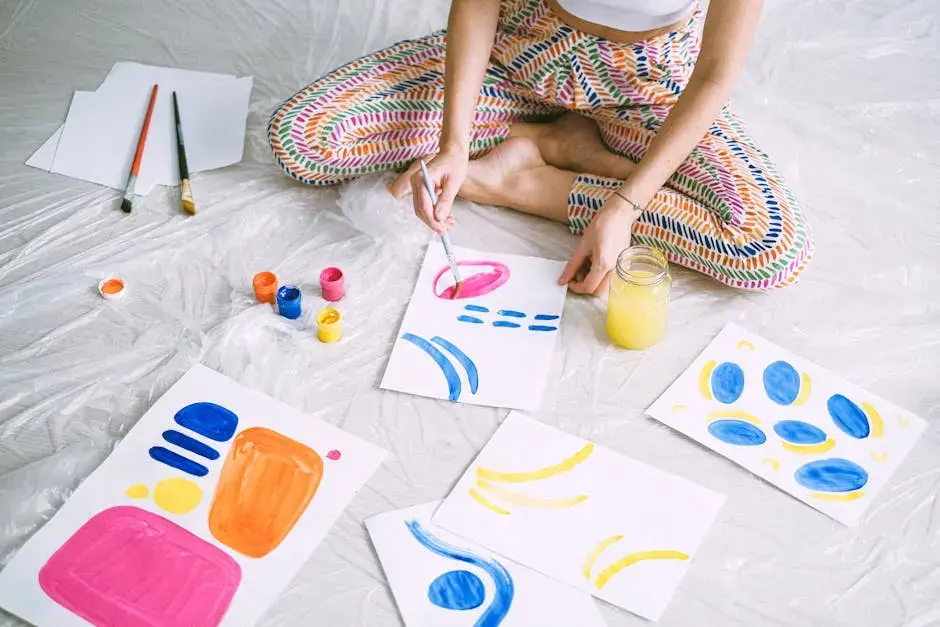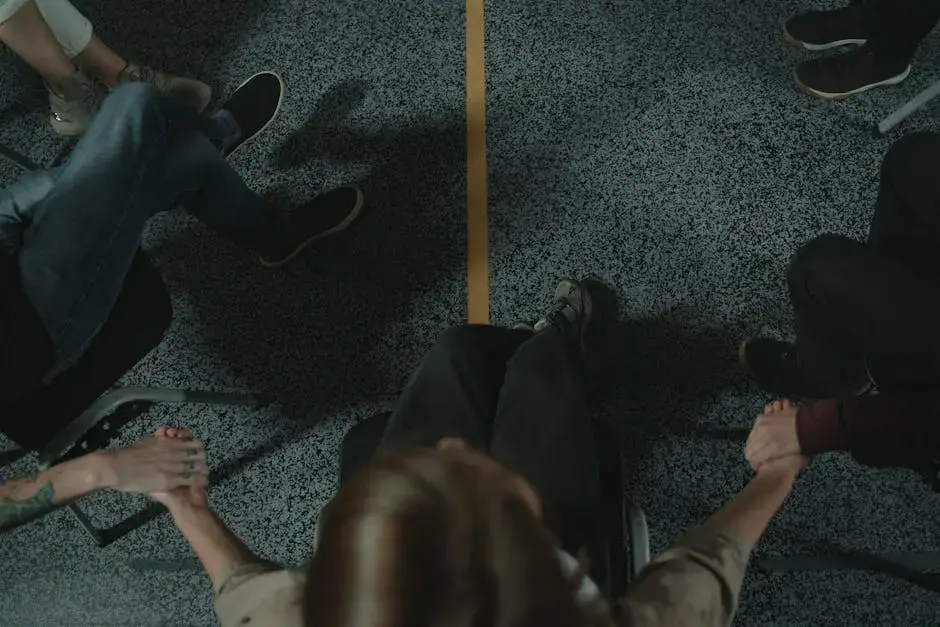Unlocking Emotion Through Art Education Therapy
- Karrie Stafford

- Feb 28
- 5 min read
Art education therapy is a powerful tool used to help individuals express their emotions and heal through creativity. In this blog, we will explore how engaging with art can enhance emotional wellbeing and provide therapeutic benefits, especially for those facing difficulties in verbal expression. Join us as we unlock the benefits of this unique approach to emotional healing.

What is Art Education Therapy?
Art education therapy combines the principles of art education and therapeutic practices to help individuals express themselves creatively while addressing emotional challenges. It's not just about creating art; it's about the process and how it encourages self-discovery and healing.
At its core, art education therapy fosters an environment where individuals can communicate their inner thoughts and feelings through artistic expression. This therapeutic process gives people the tools to explore their emotions, particularly when words seem inadequate. It's a dynamic blend of creativity and intuition that aligns seamlessly with one’s emotional journey.
Many individuals find themselves unsure of how to articulate their feelings. Art education therapy opens the door for these non-verbal expressions, using materials like paint, clay, and charcoal to provide tangible manifestations of feelings. Through this process, participants become more attuned to their emotional states, often gaining insights that they otherwise might not have uncovered.
The Benefits of Art in Emotional Expression
Engaging in art allows people to convey emotions that may be difficult to express verbally. This section will delve into how various art forms, such as painting, drawing, and collage, can help unlock feelings and provide a safe outlet for emotions.
The beauty of art lies in its ability to translate complex emotions into visual narratives. For example, a canvas splashed with vibrant colors might reflect joy, while darker shades may embody sadness or confusion. This unique visual language allows individuals to communicate with themselves and others without the confines of spoken language.
Engaging in artistic activities is beneficial not only for those dealing with mental health issues but also for anyone looking to enhance their emotional intelligence. Each brush stroke can be an exploration, leading to a better understanding of one's own feelings. As they create, participants often find clarity amidst chaos, revealing hidden emotional truths through their art.
Research suggests that regular engagement with art can lead to improved mental health outcomes, including reduced anxiety and depression symptoms. The act of creating art can ignite a sense of accomplishment, enhancing self-esteem while serving as a form of emotional release. In this way, art becomes more than just a hobby; it transforms into a crucial component of emotional self-care.
Art Therapy Techniques That Foster Connection
We'll explore several art therapy techniques that facilitate emotional connection, including guided imagery, mandala creation, and storytelling through art. Each method will be explained, highlighting its purpose and therapeutic outcomes.
Guided imagery is a powerful technique where individuals are led through a series of visualizations that encourage personal expression. As they envision different scenarios, they can create corresponding artworks that reflect their emotional state. This mindful approach allows for deeper emotional exploration, creating a bridge between thoughts and feelings.
Mandala creation is another effective technique widely used in art therapy. By drawing or coloring mandalas, individuals engage in a calming, meditative process that encourages reflection. The repetitive nature of this activity allows participants to immerse themselves in the present moment, often leading to profound insights about their emotional journeys.
Storytelling through art is equally important, as it helps individuals narrate their experiences in a creative format. By creating comics, visual stories, or illustrated journals, participants can structure their emotions, making sense of their life narratives. This method fosters connection, not only with oneself but also with others when shared in group settings.
Who Can Benefit from Art Education Therapy?
Art education therapy is suitable for a diverse range of individuals, including children, adults, and those with special needs. This section will discuss various demographics and situations where art therapy can make a significant impact.
Children, in particular, often struggle to articulate their feelings and can greatly benefit from art therapy. For youngsters facing trauma or transitions, engaging with art provides a non-threatening method to explore emotions. Through playful mediums, they may express fears, sadness, or excitement that might otherwise go unvoiced.
Moreover, adults dealing with stress, anxiety, or depression can find refuge and healing through art education therapy. It's a welcoming space that encourages self-exploration and offers tools to manage overwhelming feelings. After all, life can often feel chaotic, and art provides a grounding experience to help regain balance.
Individuals with special needs can also experience the enriching impacts of this therapy. Tailored approaches can empower them to communicate, build self-esteem, and enhance fine motor skills through creative expression. Regardless of background or ability, art education therapy opens doors to emotional connection and empowerment.
Real-Life Success Stories
Nothing speaks louder than real-life experiences. In this section, we will share inspiring stories from individuals who have transformed their emotional landscape through art education therapy, providing hope and encouragement to others.
One remarkable example comes from a teenager named Sarah, who struggled with anxiety and feelings of isolation. Through art therapy, she discovered she could visually express her fears, transforming dark sketches into vibrant landscapes. This shift not only helped her process her emotions but also empowered her to share her journey with friends and family, fostering new connections.
Similarly, a retired veteran named John found solace in painting after years of battling PTSD. His once overwhelming emotions were channeled onto canvas, enabling him to confront painful memories. By sharing his artwork in community exhibits, he connected with others facing similar challenges, creating an unbreakable bond among participants.
These stories remind us that art education therapy can be a beacon of hope. It highlights the transformative power of taking a brush, a pencil, or clay in hand and allowing creativity to guide healing. Each individual journey is unique, yet they all point towards the profound impact that art can have on emotional wellbeing.
Getting Started with Art Education Therapy
If you're interested in exploring art education therapy, this section will provide guidance on how to get started. Whether you want to join a group, seek a therapist, or start your own creative journey, we’ll cover essential tips and resources.
One of the first steps to engaging with art therapy is finding a qualified therapist who specializes in this field. Look for professionals with backgrounds in both art and psychology to ensure a holistic approach. They will guide you through the process, helping you to safely explore and articulate your emotions through various art forms.
If group settings appeal to you, consider enrolling in community workshops or classes. These settings can provide a sense of camaraderie and support, while also offering the structure to dive into creative expression. Often, participants find inspiration in each other’s journeys, fostering an evolving network of support.
For those preferring to start on their own, gather some basic art supplies—pencils, paints, or even digital tools—and allow your emotions to guide your hand. Create without judgment, focusing solely on the act of producing art rather than the outcome. Remember, this journey is about exploration and expression, not perfection.
The Transformative Power of Art Education Therapy
In conclusion, art education therapy offers a unique pathway for personal growth and emotional release. By harnessing the creative process, individuals can connect with their feelings in profound ways. Whether you are an artist or someone seeking to explore their emotions, art education therapy can be a transformative experience.




Comments